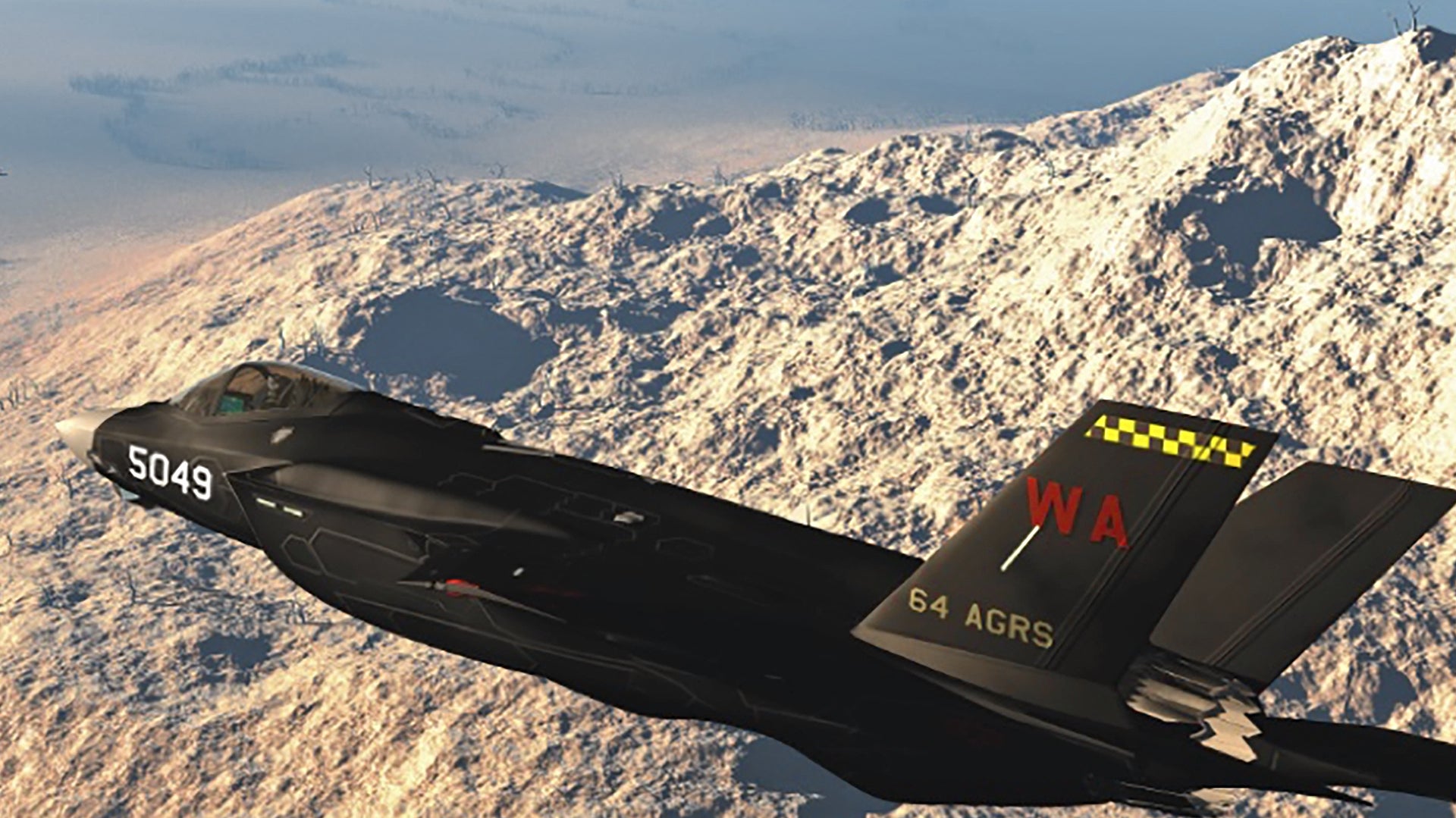The United States Air Force is reactivating the 65th Aggressor Squadron (65th AGRS) at Nellis Air Force Base and it is getting a game-changing and badly needed new aggressor capability in the form of the F-35A Panther.
The news was confirmed to us after we reached out to Nellis Air Force Base’s public affairs. Here is there official statement to from Maj. Chris Sukach, Nellis Air Force Base spokesperson:
“Nellis Air Force Base looks forward to reactivating the 65th Aggressor Squadron with the F-35A. This added capability will enhance the already robust adversary replication provided to U.S. and partner nation Air Forces through multiple training and exercise scenarios.”
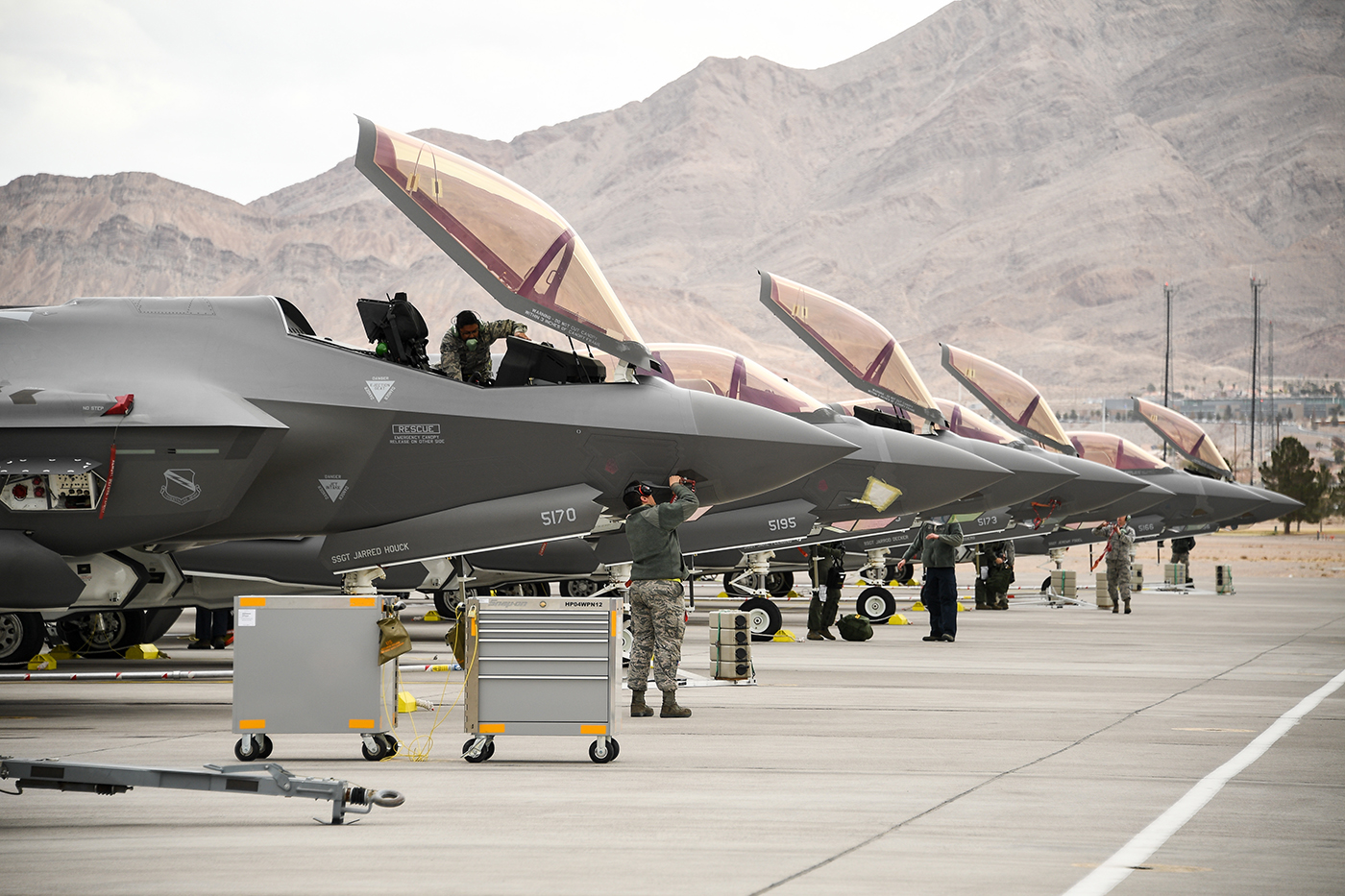
Reactivating the 65th Aggressor Squadron is a huge coup for Nellis and Air Combat Command as a whole. The 65th AGRS has a rich history and was stood up with F-15C/Ds in 2005 to augment the still very active 64th Aggressor Squadron and their Block 32 F-16C/D Vipers by adding a higher performance threat representation capability with a more powerful radar system. By all accounts, the 65th AGRS more than accomplished this task and were notorious for giving Blue Force aircrews a run for their money during exercises like Red Flag and Weapon School evolutions. They also worked with other units at Nellis AFB and at other bases to help develop new tactics and procedures for overcoming ever-evolving enemy capabilities abroad.
The squadron was first truncated in size from its height of 19 aircraft as a result of sequestration in the early part of this decade. Then it was announced that the unit would be shuttered in 2014 as part of a sweeping plan to cut operational costs across the USAF due to tightening budgets. You can read my editorial on the loss of this squadron from 2014 by clicking here. Since then, the USAF’s 64th Aggressor Squadron at Nellis AFB and the 18th Aggressor Squadron in Alaska, which also flies F-16s, have been the entire service’s only dedicated aggressor units.
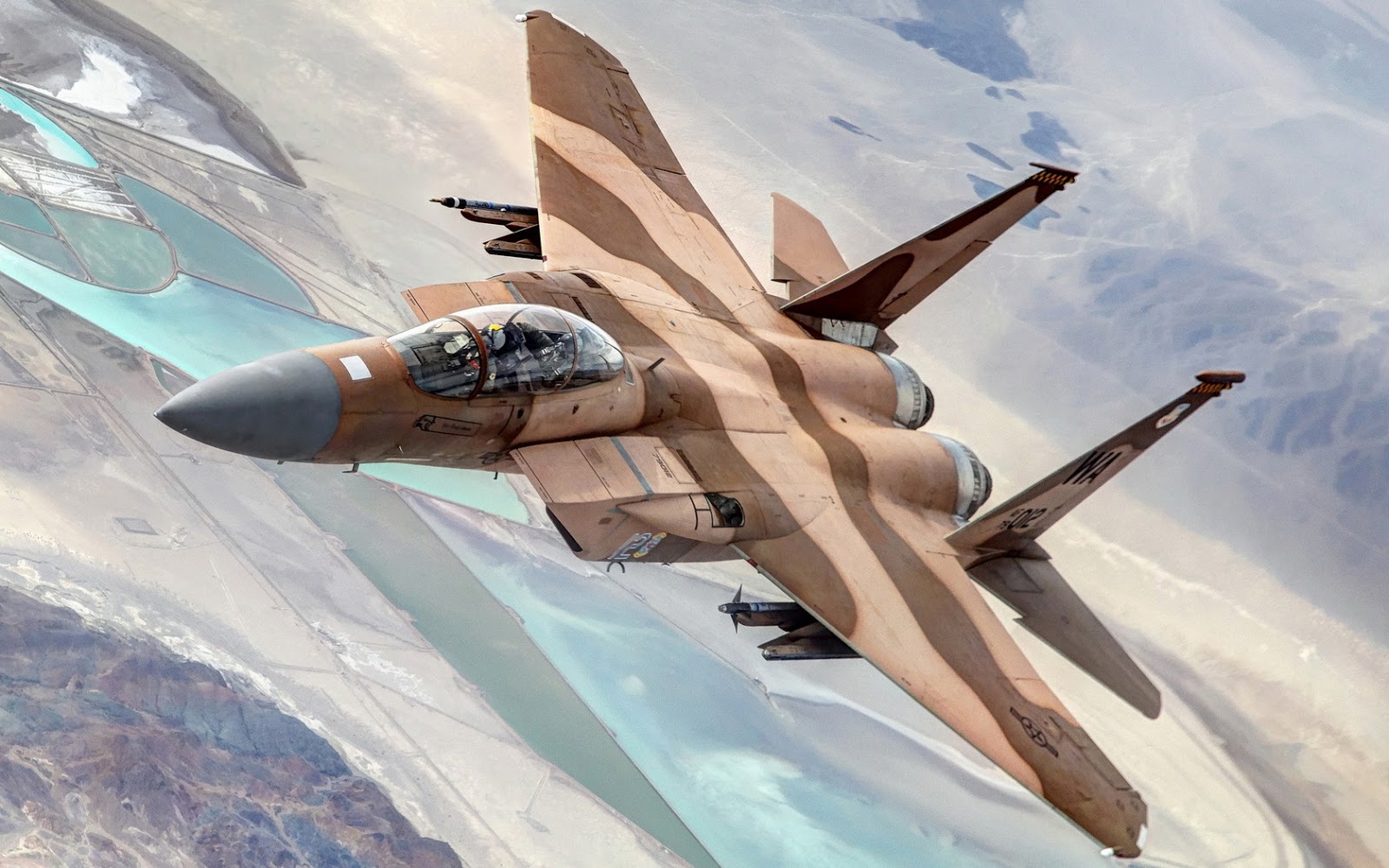
Much has changed since the 65th flew its last Red Air mission. The rapid rise of peer state threats from China and Russia, not to mention the proliferation of stealth technology, have largely changed the Pentagon’s calculus when it comes to being ready for ‘the next war.’ As a result, there have been rumors that a new aggressor squadron could be in the works, in particular, one equipped with stealthy F-35s—possibly early block aircraft that will be too costly to upgrade into fully combat coded jets.
After posting my interview with Nellis Air Force Base commander General Robert Novotny, I followed up with a question about bringing the F-35A online as an aggressor asset. At the time, he said that such an idea was a work in progress and nothing had been decided. Well, now it looks like Novotny and his comrades in the aggressor community have succeeded in making this a reality. And thank goodness they did.
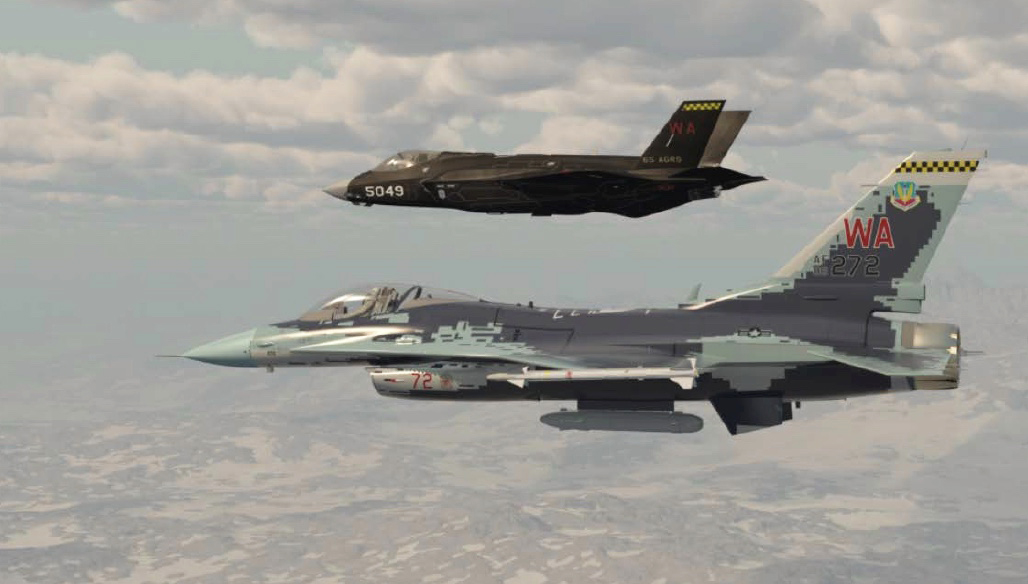
The inconvenient and unpopular truth is that the Air Force, and the Navy too for that matter, have atrophied when it comes to keeping up with successfully presenting the latest aerial threats in air combat training. The people who do this mission are incredibly talented and dedicated, and folding in cyber and electronic warfare into the overall aggressor mission space has been very effective and important. But these people can only do so much with dated airframes that benefit from the infrequent insertion of unique technologies, at best.
China’s stealth fighter is operational—or semi-operational depending on who you ask—and they have another in flight testing, as well as two stealth bombers deep in development, and are working on a number of stealth drones. Russia’s less stealthy, but still advanced Su-57 fighter is now being pitched to anyone with the hard cash to participate in the program and Moscow is also looking to stealthy drones when it comes to future air combat capabilities. This is nothing to be said of stealthy cruise missiles, which are easier to develop or procure and employ.
So yes, the USAF needs a new aggressor platform to help replicate these emerging threats and possibly using a handful of old stealth aircraft and newer stealthy target drones will not do the trick alone. The F-35, on the other hand, will, and much, much more.
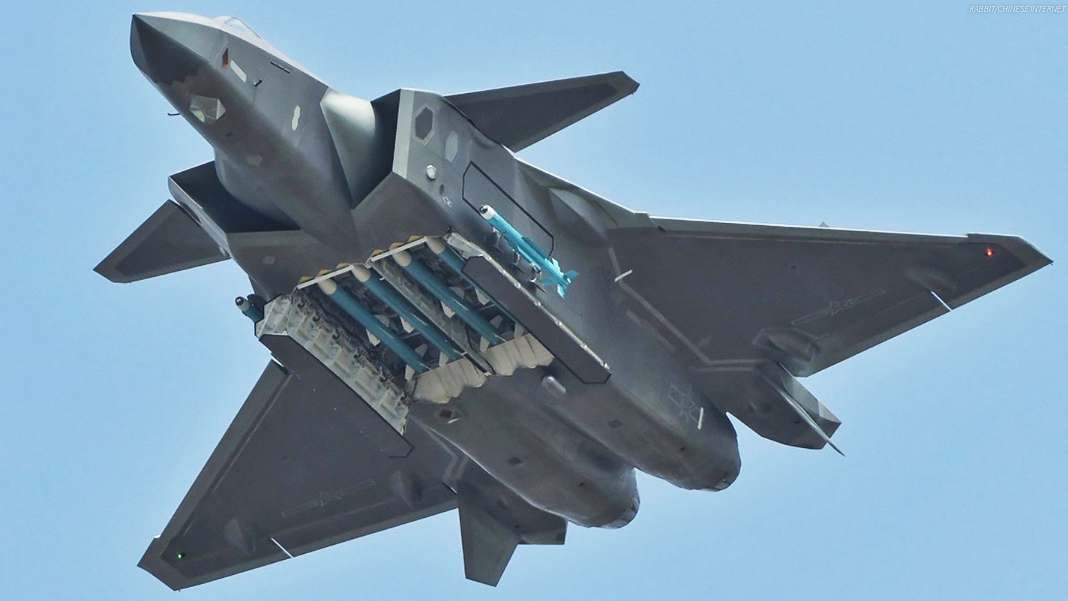
The F-35’s ability to play the bad guy will surpass that of any aircraft ever tasked with the mission before. The aircraft is uniquely suited to replicate a wide range of threats with unprecedented high fidelity. I have talked with sources about this in the past and they have noted that the F-35’s software alone should be able to be manipulated to replicate the sensor, sensor fusion, electronic warfare, and communications capabilities of adversary threats. In other words, applications could be designed to limit various aspects of the F-35’s capabilities—and enhance others synthetically via data-link—to better mirror that of the aircraft it is masquerading as. In addition, it can be equipped with bolt-on radar reflectors that may be able to be manipulated to better replicate certain radar signatures of enemy aircraft, including those that aren’t even stealthy at all.
So, we are talking about an aggressor iPhone here compared to the flip phones of the past. One day it can be a Su-35, the next a J-20, and the next it can replicate an enemy stealth bomber on a nuclear strike mission, and do so potentially with unprecedented fidelity.
The Panther’s integrated electronic warfare system could also allow the F-35 to mimic the bad guy in various ways and provide the ability to fool allied sensor systems. In particular, the F-35’s little known, but hugely important advanced towed decoy system could give the aircraft the ability to appear as something, or some things, it is not one moment and disappears entirely the next.
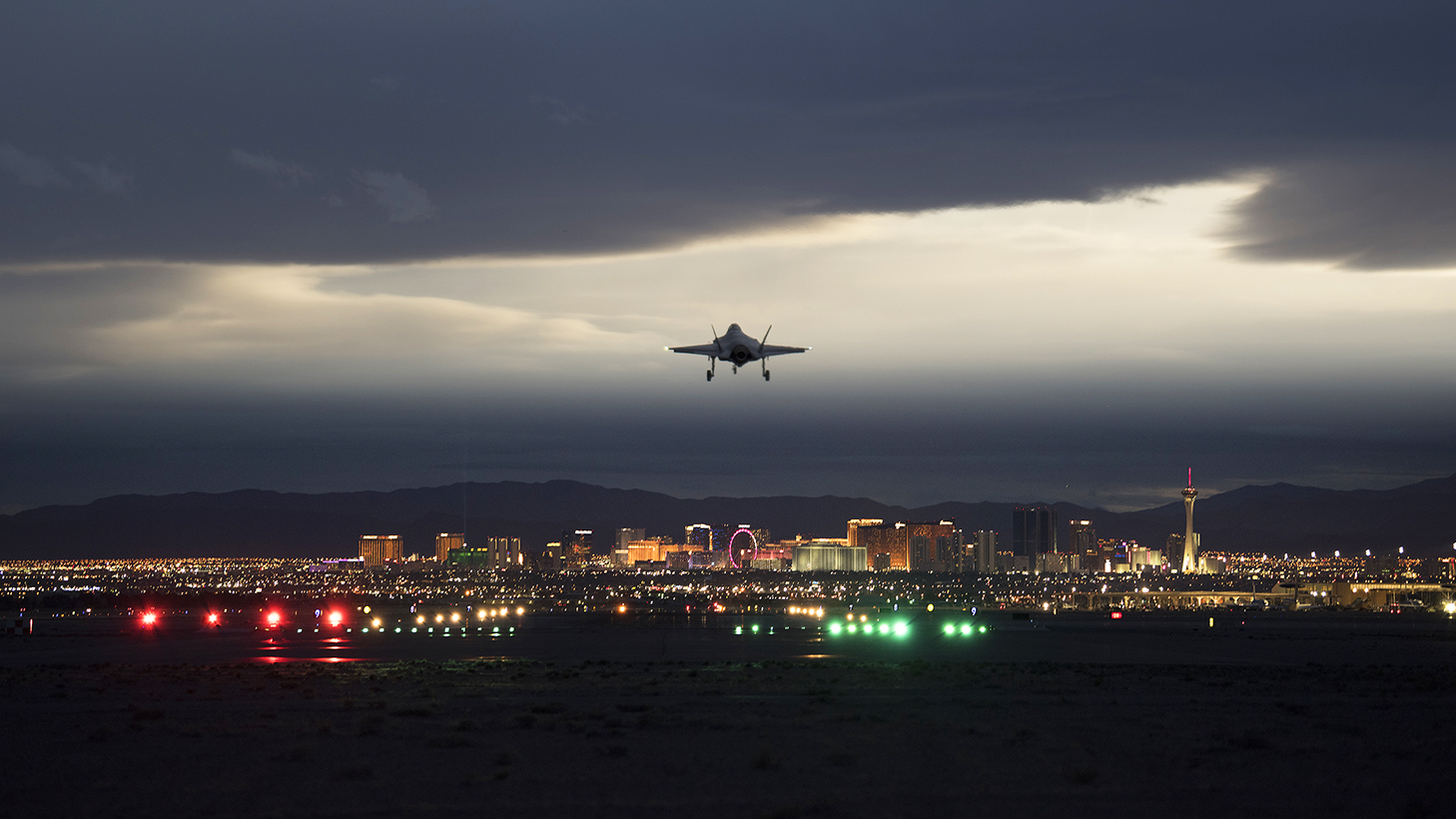
All told, the F-35’s ability to manipulate its own signature should prove to be a major advantage when it comes to giving fleet pilots a real look at what the bad guy may show up like during actual combat.
The USAF really did the right thing here in pushing the F-35 into the aggressor role and bringing back the squadron that has the perfect pedigree for making it happen. It shows that they are coming to terms with the real threat posed by America’s adversaries in the decade to come and that the aggressor mission is absolutely key to confronting it. Also, this decision highlights how the Air Force is truly creating a robust high-medium-low capability aggressor mix with the help of throngs of contractor adversary support jets.
We still don’t know the timeline for standing up this unit, but it will surely take time to realize. We will keep you up to date as more information about this exciting development comes available.
UPDATE: 6:45pm PDT—
The USAF has now put out a release on the news. We were correct, they will be repurposing early-build jets for this role. Nine of them to start, all of which will come from Eglin AFB in Florida. Eglin is the schoolhouse for USAF F-35 training. This is probably a good thing because they can get creative and modify these jets specifically for the mission as they will never see combat.
Air Force Secretary Heather Wilson states:
“This move will allow us to repurpose early production F-35s to help train Airmen for the high end fight.”
The release is not precise in its wording, but the aircraft may not be transferred until 2022, when new planes will replace them at Eglin. You can see the confusing statement below:
Aircraft transferring from Eglin AFB to Nellis AFB will not occur until newly produced aircraft arrive at Eglin AFB to replace them. New aircraft are planned to arrive at Nellis AFB beginning in early 2022.
This is in line with our thinking that standing up a unit like this as the force is trying to expand its front-line F-35 force will be more protracted than doing so with 4th generation fighters. It will also allow time for industry and the USAF to figure out the unique aggressor configuration for these jets.
Contact the author: Tyler@thedrive.com
